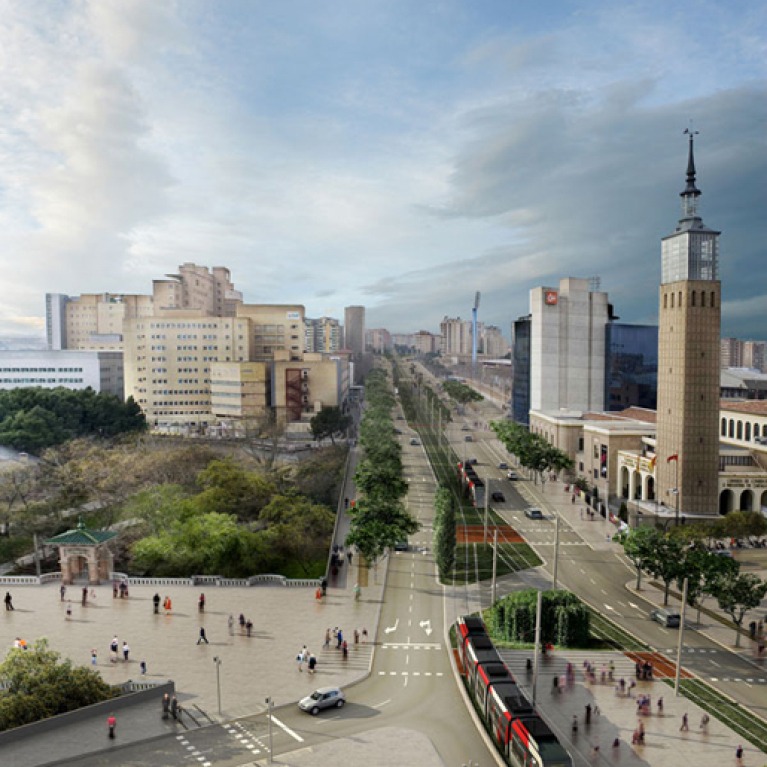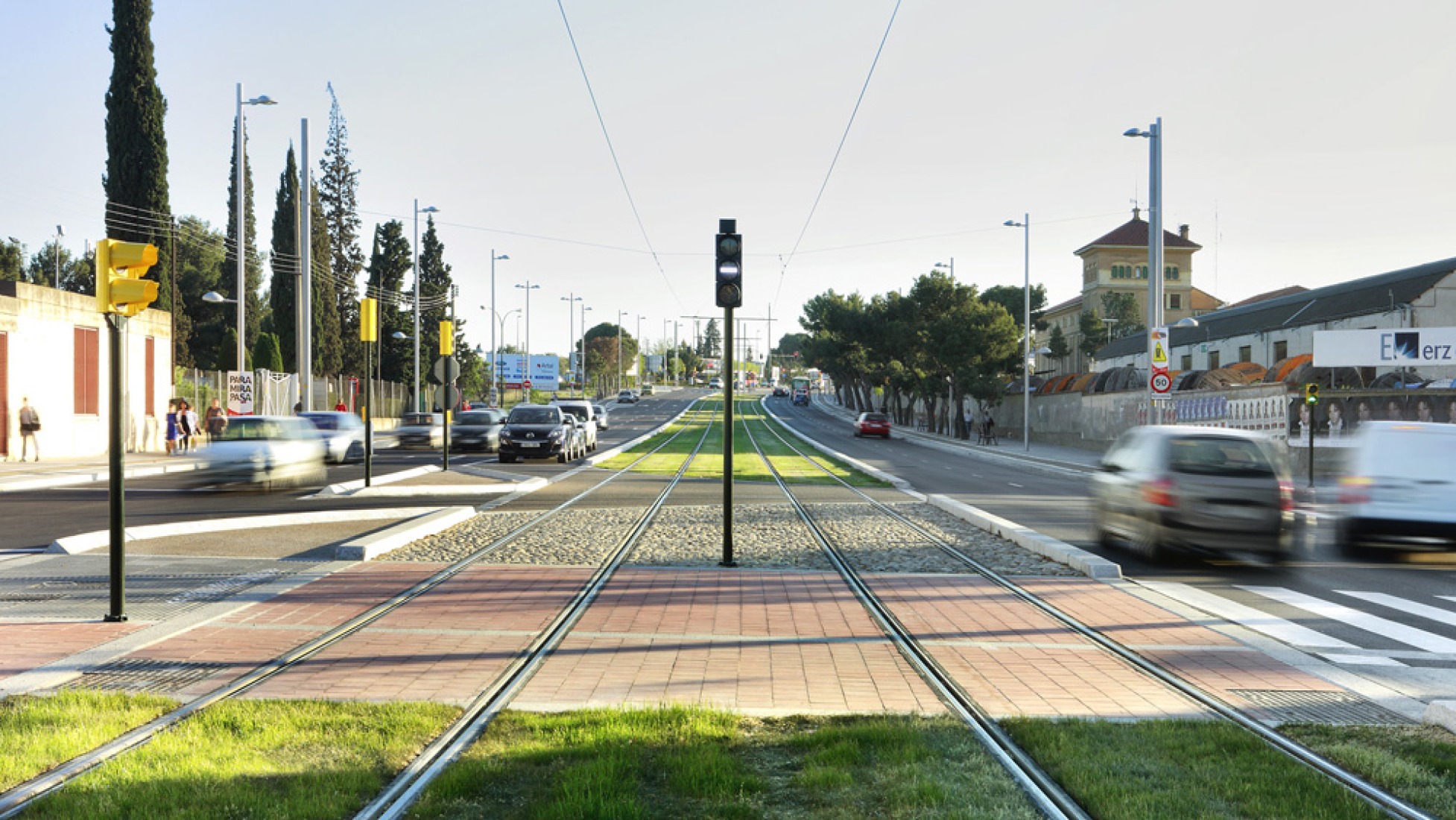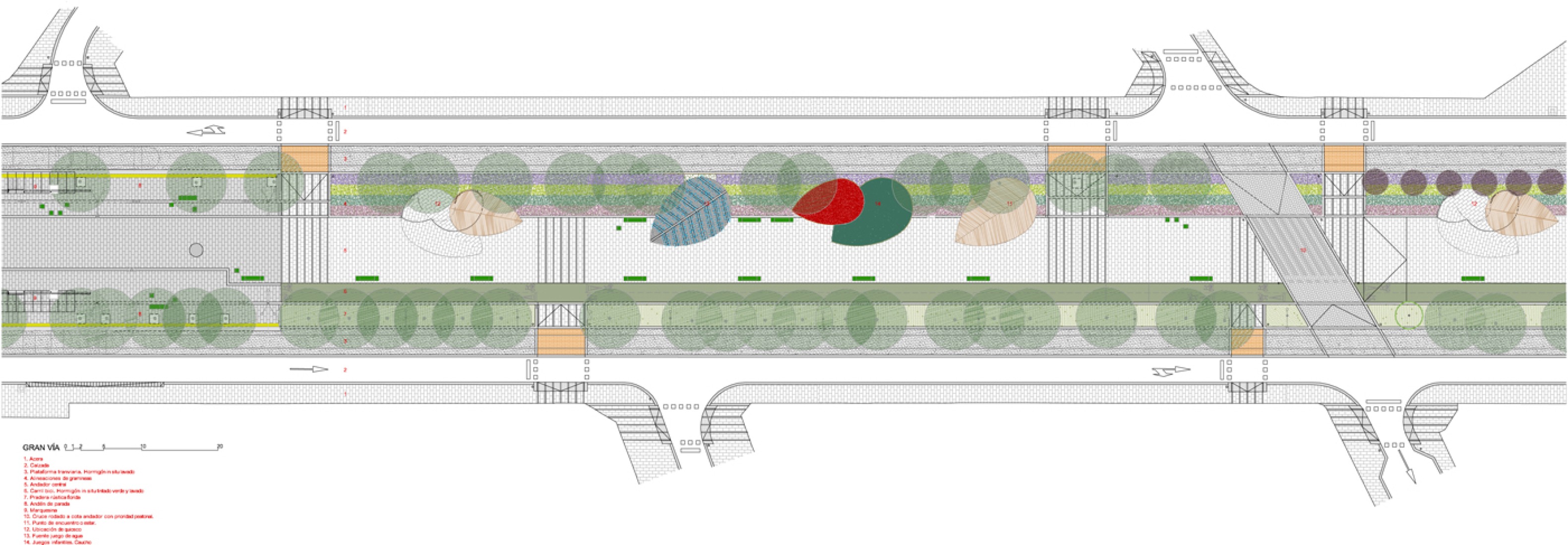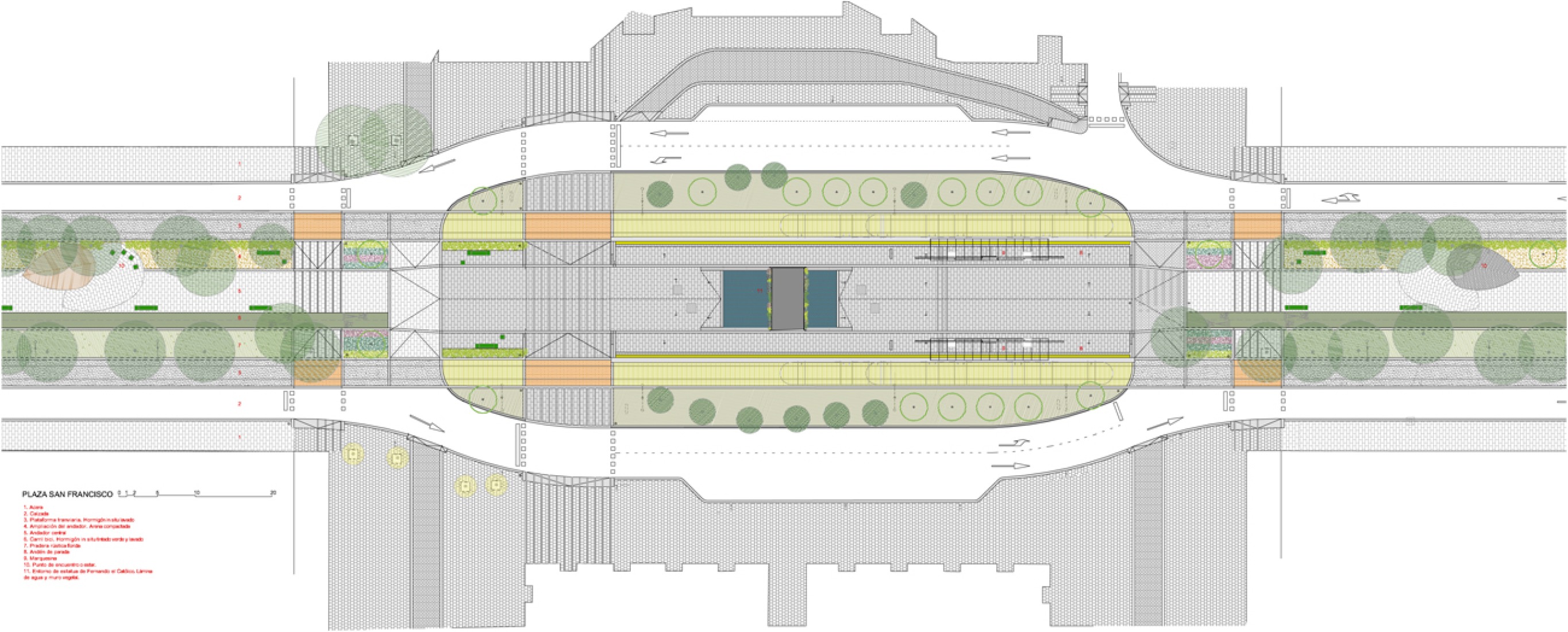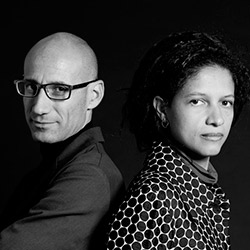The proposal of Tram Urban Integration prioritizes weaker users forcing the pedestrian continuity and removal of architectural barriers, reforming historically isolated points, adjusting the position of the stops and establishing a coherent system of paving and urban elements throughout the city democratizing the quality of treatment of public space.
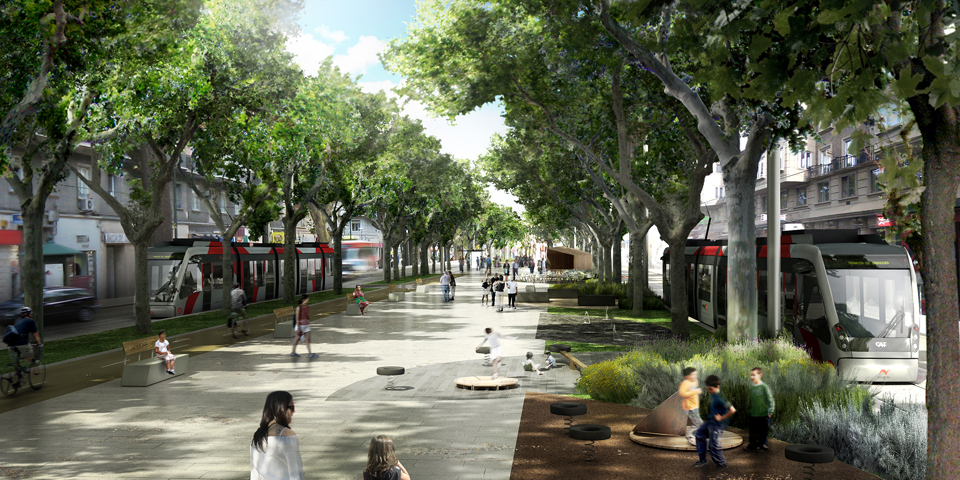
Render © sbda +Tranvías de Zaragoza.
Project memory.
From the 60, as in other Spanish cities began a rapid transformation of the spaces of road traffic, which had been both reduced and often with little separation between pedestrian and vehicle. The tram had lived with few vehicles, cars and pedestrians until the industrialization of the late 50's progress to the binomial associated car and great paved avenue. In Zaragoza, the walker's central Paseo de la Independencia gives way to 12 lanes in a display of modernity applauded in the press of the time. And in the 70 disappear almost all trams Spanish, being precisely that of Zaragoza the last to be removed.
The Zaragoza of 70, like many other Spanish cities, is under the total dominance of private vehicles, power walkers using the Gran Via, Ferdinand and Sagasta as car parks. It is in the 90's when you start a gradual reversal of this process of primacy shot in Zaragoza is embodied in the successive reforms of the Plaza del Pilar Street and Paseo Alfonso of Independence. After the efforts of "aggiornamento" city with the goal of the EXPO 2008 (banks, green belt, cycle paths ...) proposes a radical revision of urban mobility through public transport.
The commitment to implement the tram in the city of Zaragoza with a first line that runs through it completely from north to south, crossing the historic center, it becomes an opportunity to regain space for pedestrian walks to reform obsolete and solve problems of continuous pedestrian in addition to traffic calming, public transport priority and the introduction of cycle lanes in a systematic and continuous. Urban integration is the incorporation into the public space of all logical that cross the city: pedestrians, cyclists, public transport, private vehicles, neighbors, merchants, visitors, history, culture, urban development, vegetation, water ...
The proposal gives priority to the weakest users and pedestrian continuity forcing the removal of architectural barriers, reforming key squares and historically isolated from traffic by adjusting the position of the stops combining the logic of the urban transportation and establishing a system of paving and coherent urban elements throughout the city, to democratize the quality of treatment of public space without differentiating neighborhoods.
Shelters, as the other elements, are designed in accordance with the severity of the climate of Zaragoza, a shade cover and wind protections becomes an element of identity, a large shadow with night lighting, capable of accommodating all seeming complexity in the simplest installations.
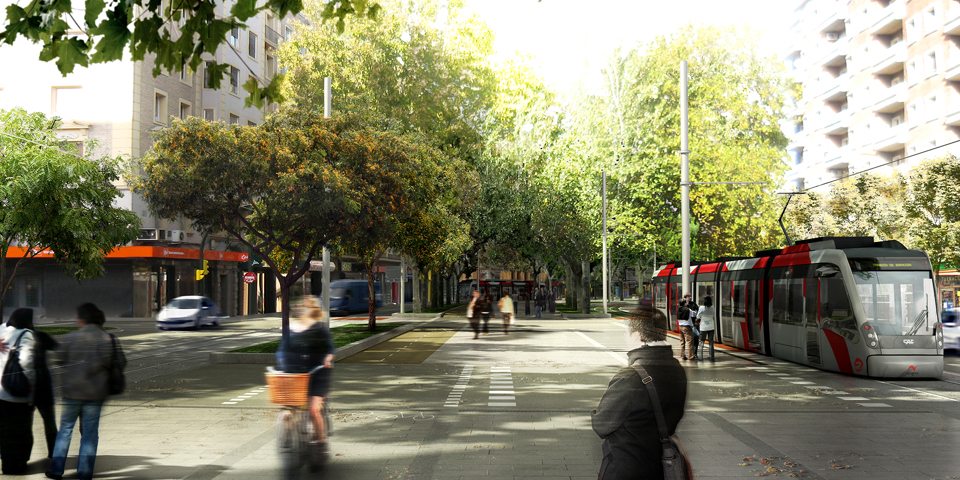 Render © sbda +Tranvías de Zaragoza.
Render © sbda +Tranvías de Zaragoza.
TECHNICAL SHEET.
Developer.- Ayuntamiento de Zaragoza
Program.- Integración Urbana de la implantación del tranvía de Zaragoza.
Date of project.- 2009-2010
Date of building.- Phase 1 2010-2011, F phase 1
Architects and Team.- Iñaki Alday, Margarita Jover, author arch.; Jesús Arcos, arq. responsable. Ana Quintana, Alina Fernandes, Raquel Villa, Jordi Hernández, Marta Castañé, Bruno Seve, collaborator arch. Bruno Remoué & associats, (mobility).
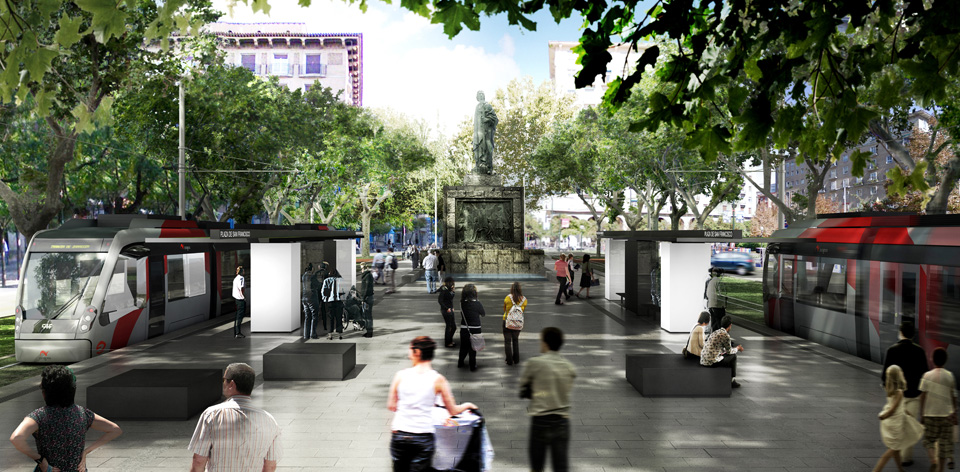
Render © sbda +Tranvías de Zaragoza.
Marquee Zaragoza Tramway
Facing the usual canopy busstop of Nordic origin, which keep the rain off and lets through the sun, the canopy tram, in Zaragoza, seeks to protect from sun and intense heat, and wind from area. A broad and deep shadow that generates small places in the city, with a black cover, opaque, self-finished superiorly with a garden plant of dry weather and little soil, "sedums", which isolates it from solar radiation. There is not a repetition frame structure, extensible, this is a canopy that is supported, without any apparent effort, on two volumes of glass and a central cabinet. Its apparent simplicity holds all connection elements and control of electricity, lighting, telecommunications and semaphores, and this allow a platform without of visual noise. At night, cabinets lamps become recognizable to returning to the tram stop, creating a quality environment especially in urban space. these marquees allow transform a darkness place with the sun to a point of light at dusk.
ALDAYJOVER architecture and landscape IN METALOCUS.
Cultural centre "El Molino". Utebo. Zaragoza. | Iñaki Alday, Margarita Jover
published in.- M-015 | A08 | p. 106
Zuera House | Inaki Alday Sanz, Margarita Jover Bibdum
published in.- M-011 | A03 | p. 48
S-T House. Terrasa | Inaki Alday Sanz, Margarita Jover Bibdum
published in.- M-011 | A02 | p. 38
